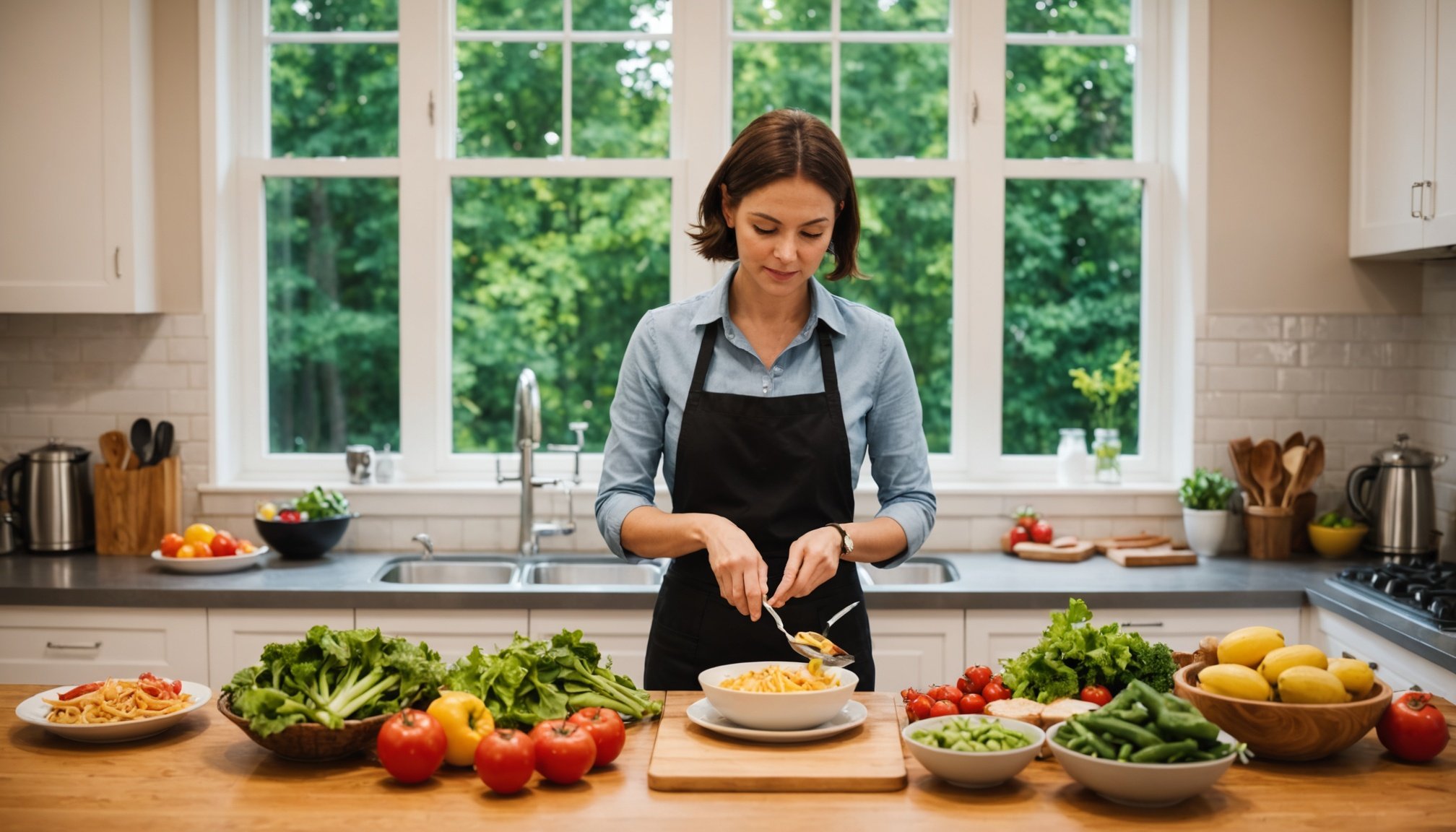The Influence of Natural Light on Eating Habits
Natural light significantly impacts our mood and appetite, offering profound psychological benefits. Exposure to natural light can trigger mood enhancement, which in turn stimulates appetite. People often find their spirits lifted in well-lit environments, contributing to a more enjoyable dining experience.
Studies indicate that individuals exposed to ample natural light tend to make healthier food choices. The presence of natural light during meal times can encourage the consumption of nutritious foods, possibly due to its uplifting effects. This appetite stimulation is partly linked to the body’s intrinsic response to daylight, which can enhance energy levels and positively influence our dietary selections.
Topic to read : Transform Your Kitchen: Discover the Advantages of a Vertical Spice Rack for Effortless Access to Metabolism-Enhancing Spices
The changing dynamics of natural light throughout the day can affect how we prepare and consume meals. For instance, morning light, known for its gentle hue, may invigorate the process of breakfast preparation, making it a more pleasant start to the day. In contrast, the softer glow of evening light can create a relaxed setting, promoting mindful eating practices during dinner.
By understanding how natural light influences mood and appetite, we can better appreciate its role in facilitating healthier eating habits and improving our overall well-being.
Also read : Streamline Your Slim Diet: Revolutionize Your Kitchen with a Meal Planning Whiteboard
Designing for Nutrition: Kitchen Window Placement
Thoughtful window placement in a kitchen is crucial for maximizing natural light, which aids in meal preparation. The orientation of windows can significantly influence the quality and duration of sunlight entering this essential space. Aligning windows to capture morning sun, for instance, can invigorate meal preparation, contributing to a more enjoyable cooking experience. In contrast, a kitchen bathed in midday light can propel appetite stimulation naturally, aligning with the body’s circadian rhythms.
Incorporating practical design tips can harness the benefits of natural light effectively. Consider these approaches:
- South-facing windows: Optimal for year-round light access, enhancing visibility and mood.
- Large, unobstructed windows: Facilitate better light penetration, creating a brighter cooking area.
- Skylights: Useful in illuminating central kitchen zones in homes where wall windows are limited.
Case studies reveal that kitchens designed with intentional window placement not only look aesthetically pleasing but also enhance culinary experiences. A kitchen that encourages seamless integration of natural elements, such as light, complements the art of cooking while promoting nutritious meal preparation. This thoughtful design offers a holistic approach to improving dining habits by aligning environmental and lifestyle factors with dietary goals.
Creating a Nourishing Kitchen Environment
Designing a kitchen environment that promotes healthy eating requires incorporating elements that encourage beneficial dietary choices. An inviting kitchen ambiance can improve meal experiences significantly, where attention to detail plays a crucial role. One key element is having windows that allow clear views and scenery. Research suggests that engaging with nature through windows can positively influence our mood, subsequently affecting our food selections.
A well-organised and clutter-free kitchen also fosters nutritious eating. Simplifying and decluttering the space makes healthy ingredients more accessible and cooking more enjoyable. Consider arranging items such as fruits, vegetables, and whole grains in prominent, easy-to-reach locations. This organisation promotes the use of wholesome ingredients, enhancing the overall dining experience.
Incorporating greenery, like indoor plants, further enriches the kitchen atmosphere, offering both visual appeal and the psychological benefits of being closer to nature. Balancing aesthetic and functional aspects contributes to creating a space conducive to nurturing better eating habits. By aligning the ambiance with the goal of healthier living, the kitchen becomes an interactive environment that supports and encourages improved nutrition. Practical changes in the kitchen’s appeal can indeed inspire more mindful, balanced dietary choices.
Personal Experiences and Anecdotes
Exploring personal stories sheds light on how kitchen transformations can impact meal experiences and enhance dietary choices. These engaging narratives often reveal how a change in the kitchen ambiance can significantly shift eating habits.
Engaging Narratives
Consider Sarah, who integrated natural light into her kitchen by adding a skylight and noticed a visible uplift in her family’s mood during meal times. This change not only brightened the atmosphere but also encouraged healthier eating as the mood enhancement stimulated more mindful food choices.
Transformation Stories
John’s experience with kitchen redesign highlights the power of intentional window placement. By reorienting the kitchen windows to face east, he effectively utilized morning light that invigorated the space. This resulted in an increased enthusiasm for breakfast preparation and more balanced dietary choices, illustrating the profound influence of kitchen impact on daily habits.
Lessons Learned
From these anecdotes, it’s evident that strategic kitchen alterations can lead to meaningful dietary transformations. Individuals often gain lessons learned that inspire further positive changes, such as prioritising ingredients that benefit from enhanced visual appeal created by increased natural light. Overall, these stories underscore the significance of thoughtfully designed kitchen spaces in fostering healthier eating patterns.
Evidence-Based Strategies for Kitchen Design
Enhancing a kitchen for nutritious eating starts with implementing research-backed strategies. These strategies ensure that kitchen layouts support healthy habits effectively and efficiently. When it comes to kitchen design, balancing aesthetics with functionality is crucial.
A bright, well-lit kitchen is not only visually appealing but also beneficial for maintaining healthy habits. One evidence-based approach suggests incorporating abundant natural light to elevate mood and encourage nutritious choices. Studies show that individuals who experience higher levels of natural light tend to gravitate towards healthier eating patterns, thanks in part to the mood enhancement it provides.
For those looking to integrate these strategies into existing kitchens, consider installing adjustable lighting systems. These systems allow for the simulation of natural light cycles throughout the day, fostering an environment conducive to joyful and conscious dining experiences.
Additionally, clear and open counter spaces make meal prep both accessible and enjoyable. Such spaces eliminate clutter, allowing for easy access to wholesome ingredients—anointing fruits and vegetables as the stars of your ensemble.
By prioritising evidence-based strategies, one can fashion a kitchen environment that seamlessly merges functionality and aesthetics, ultimately fostering healthy eating habits. Such harmonious design effectively promotes both the joy of cooking and the nourishment of body and mind.

